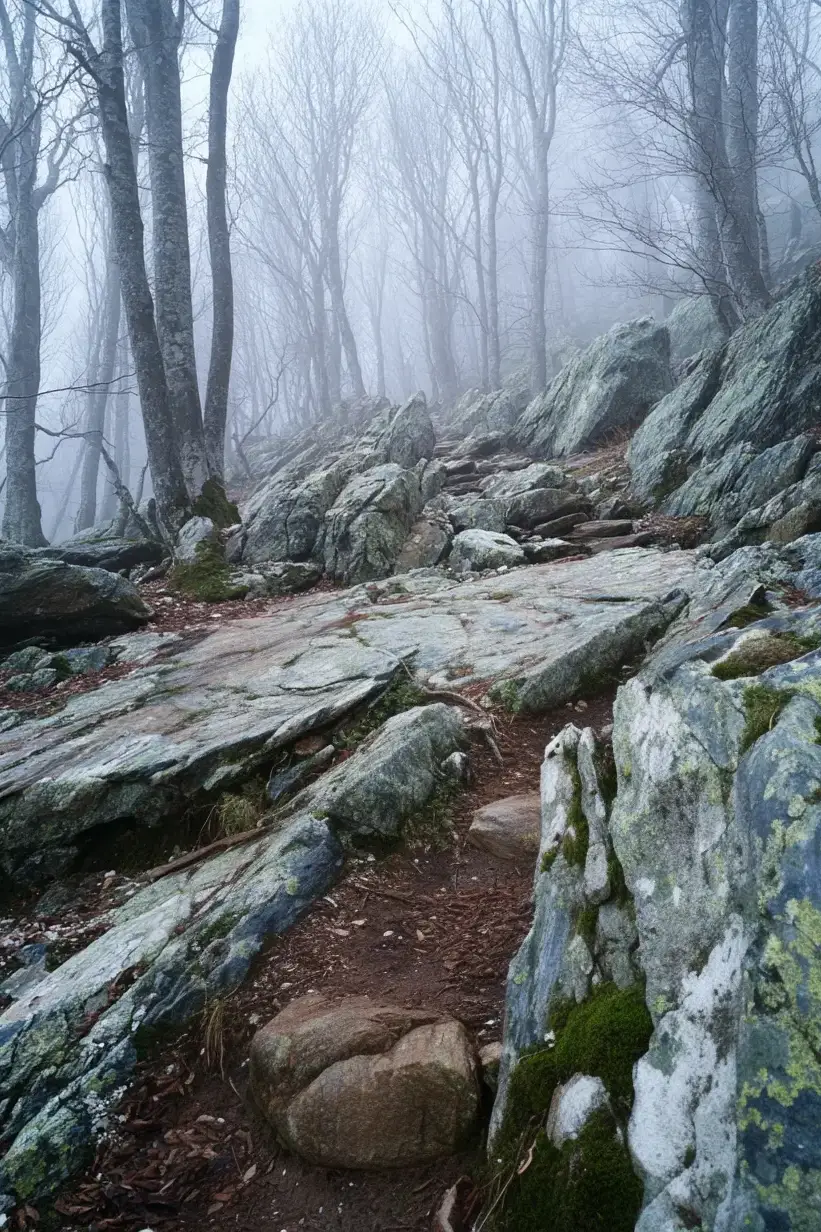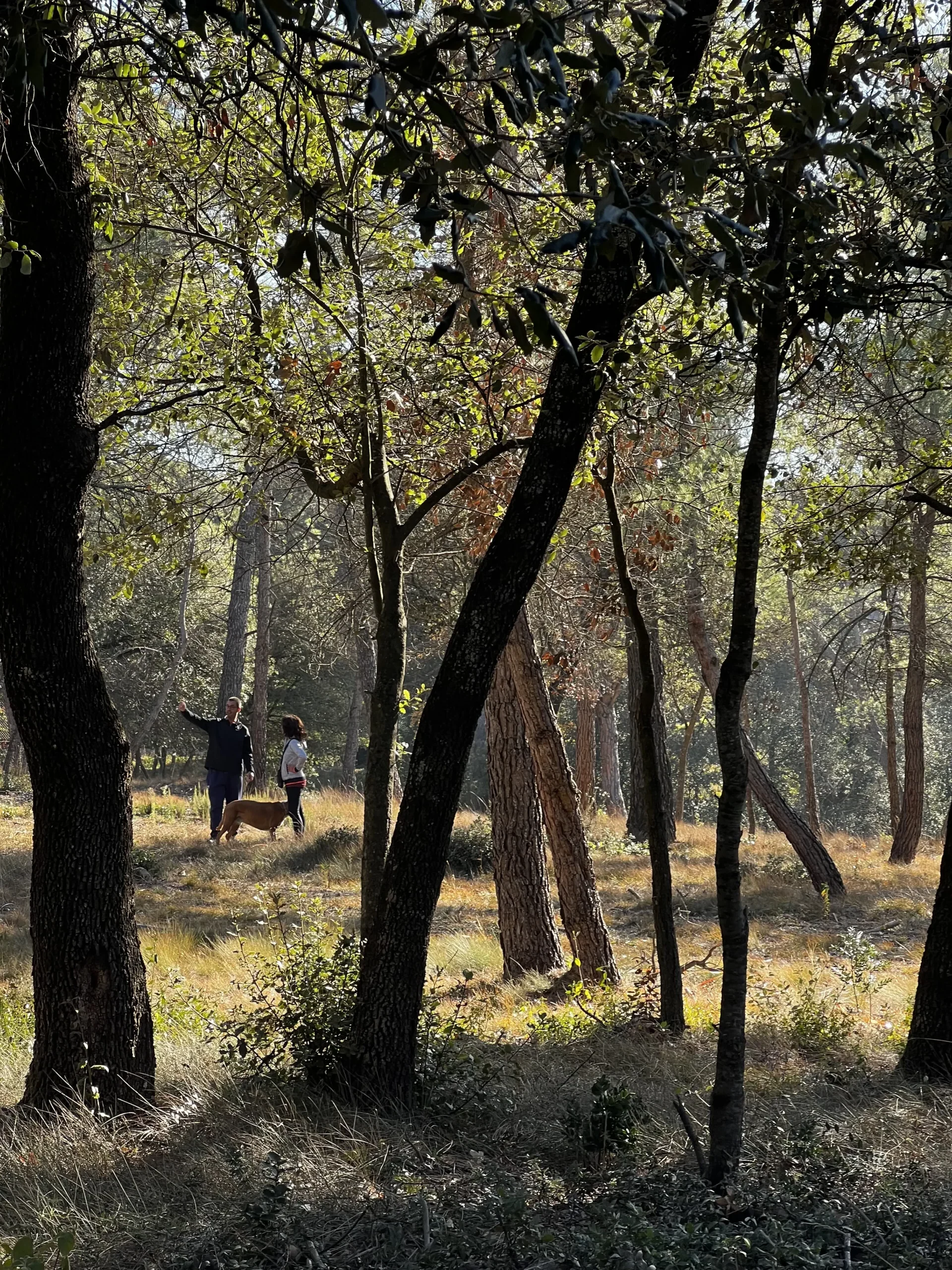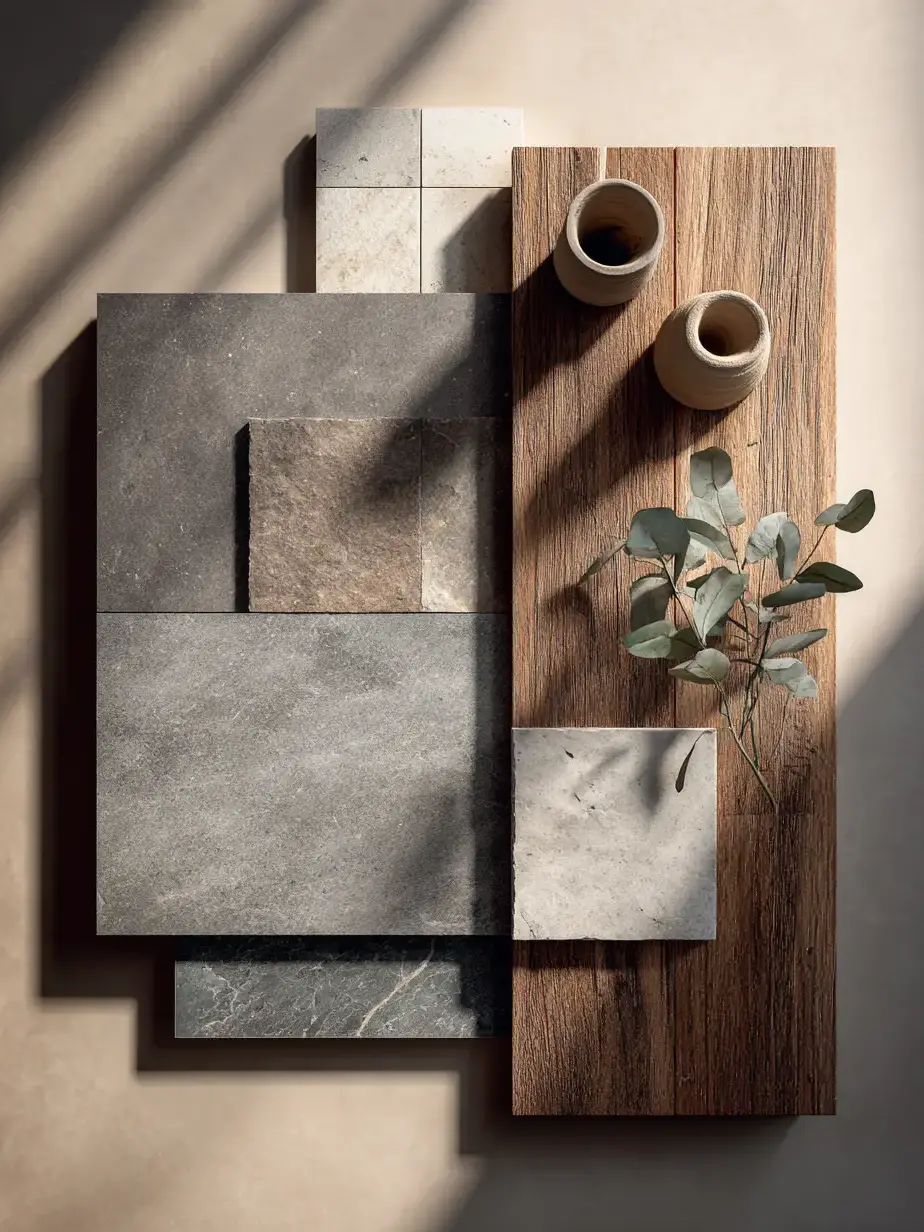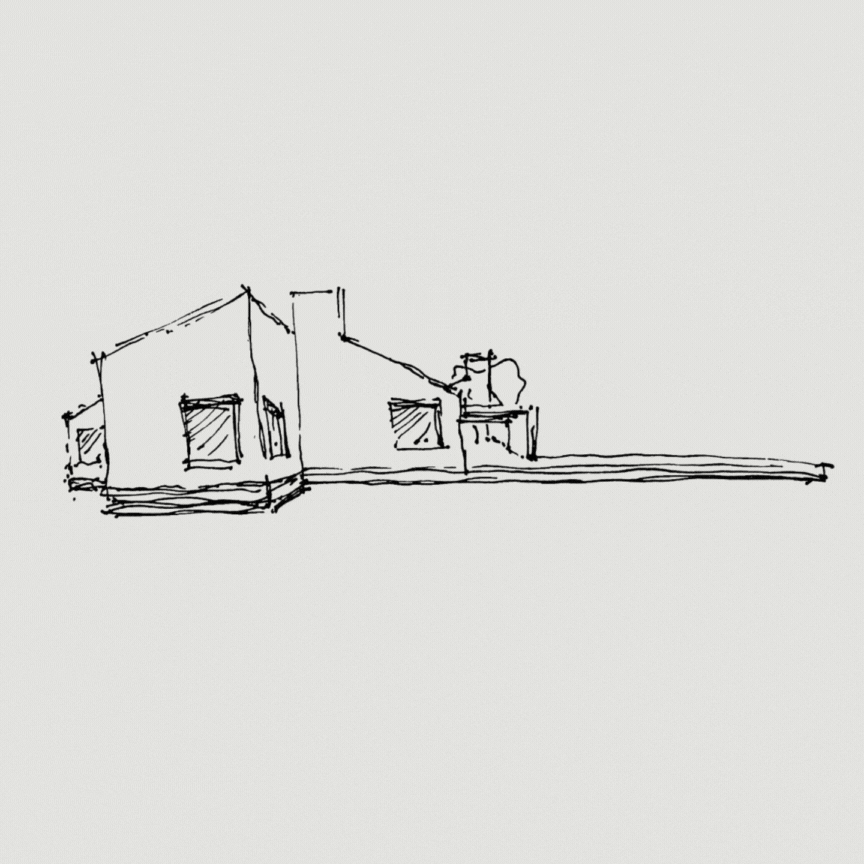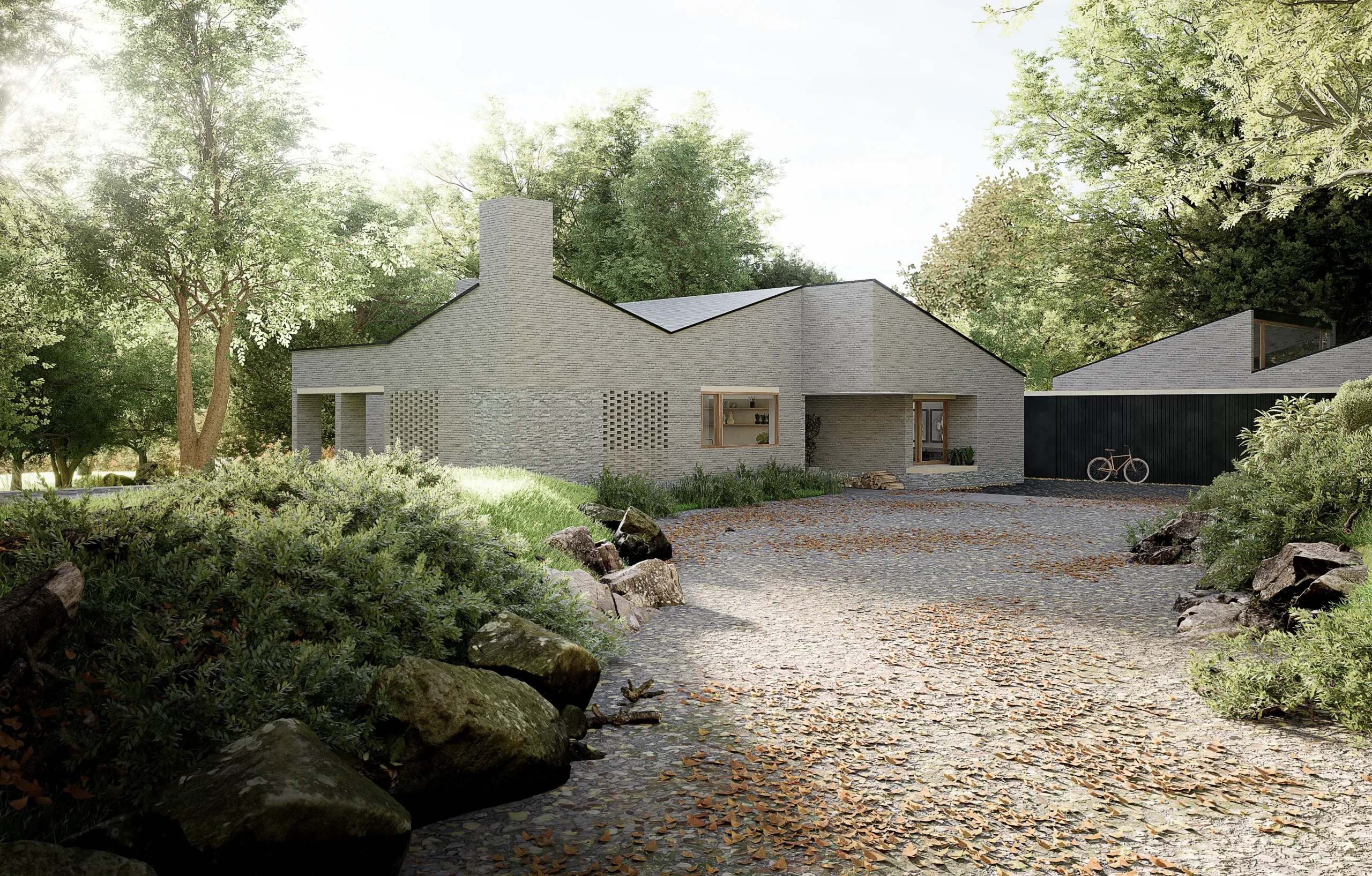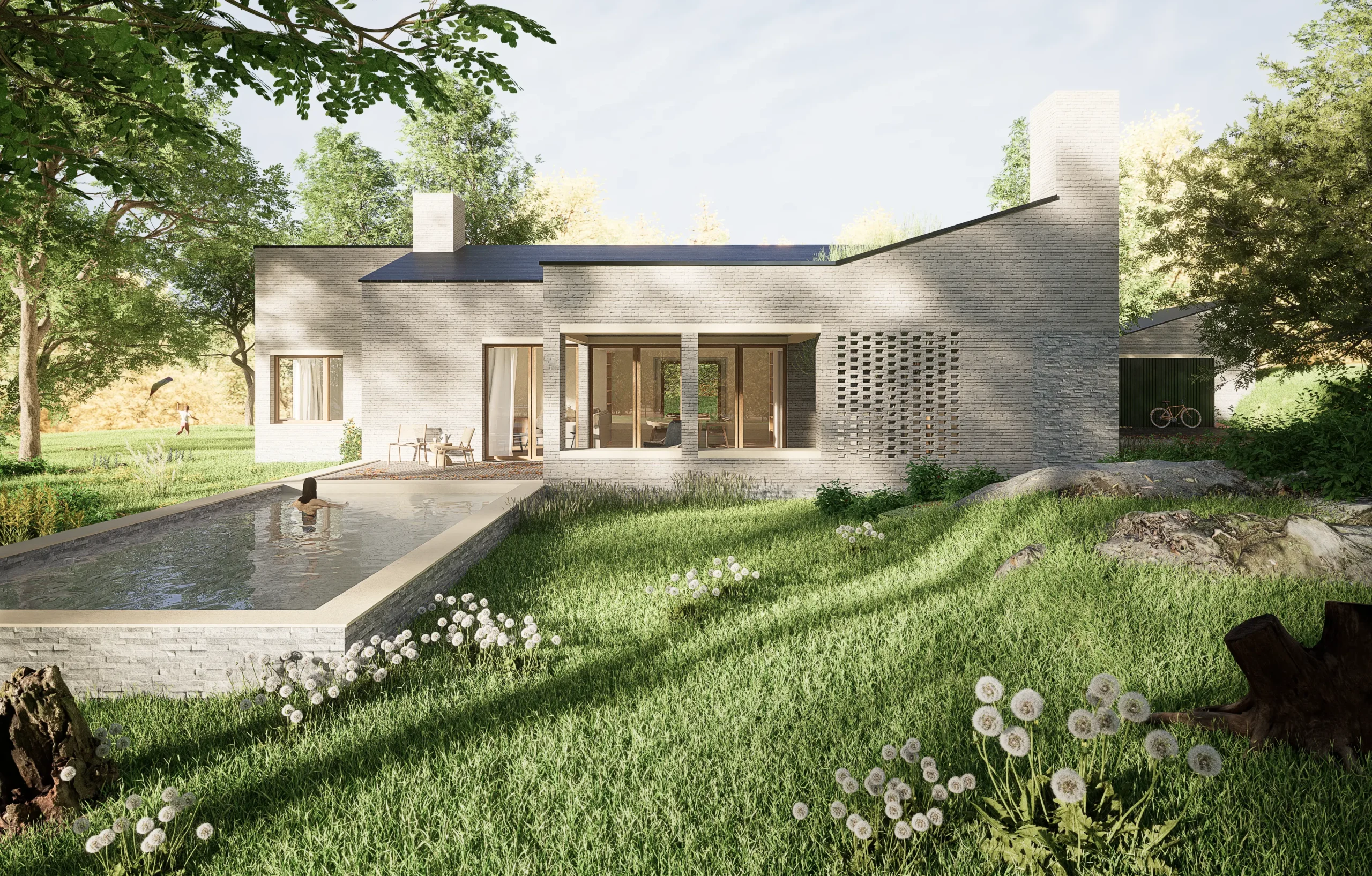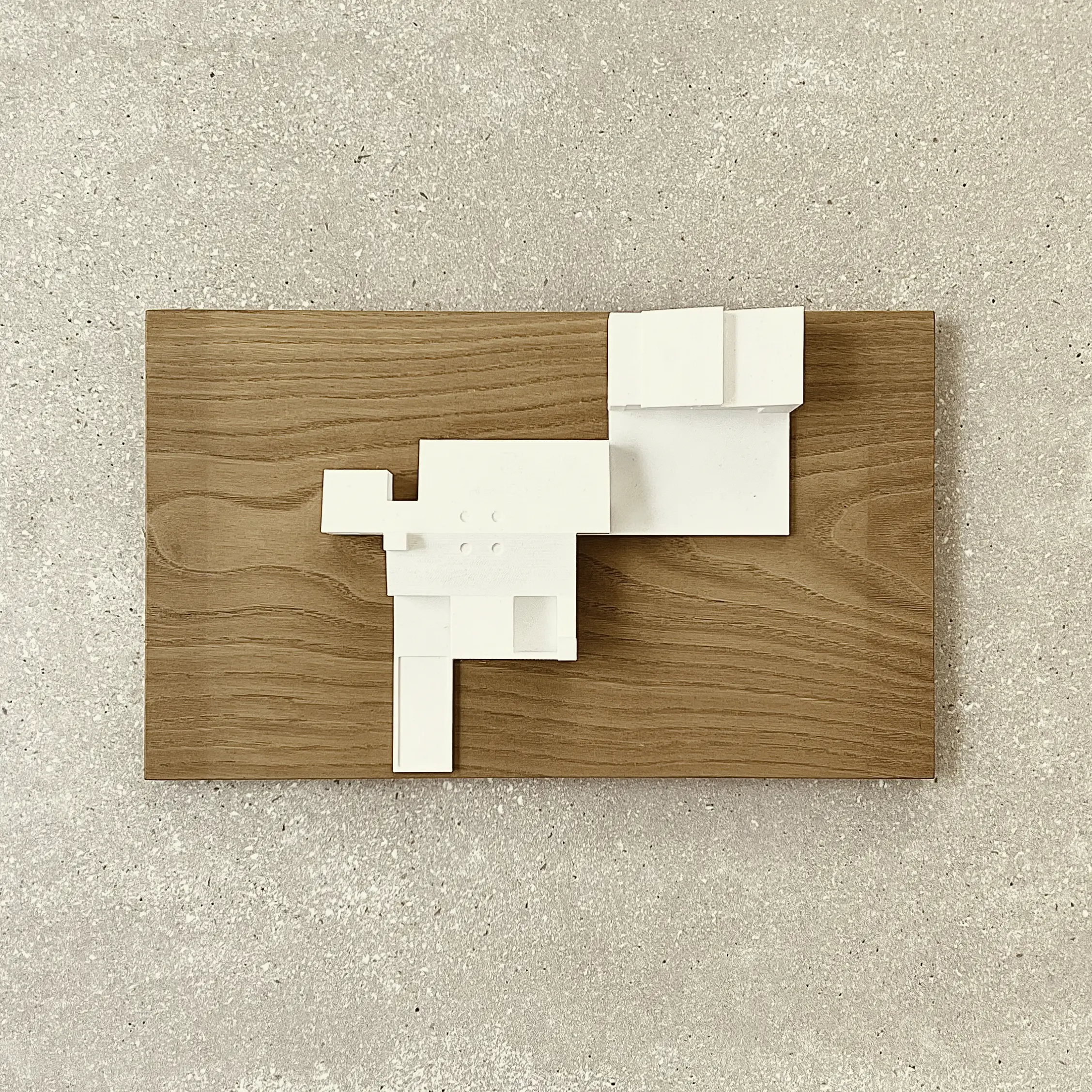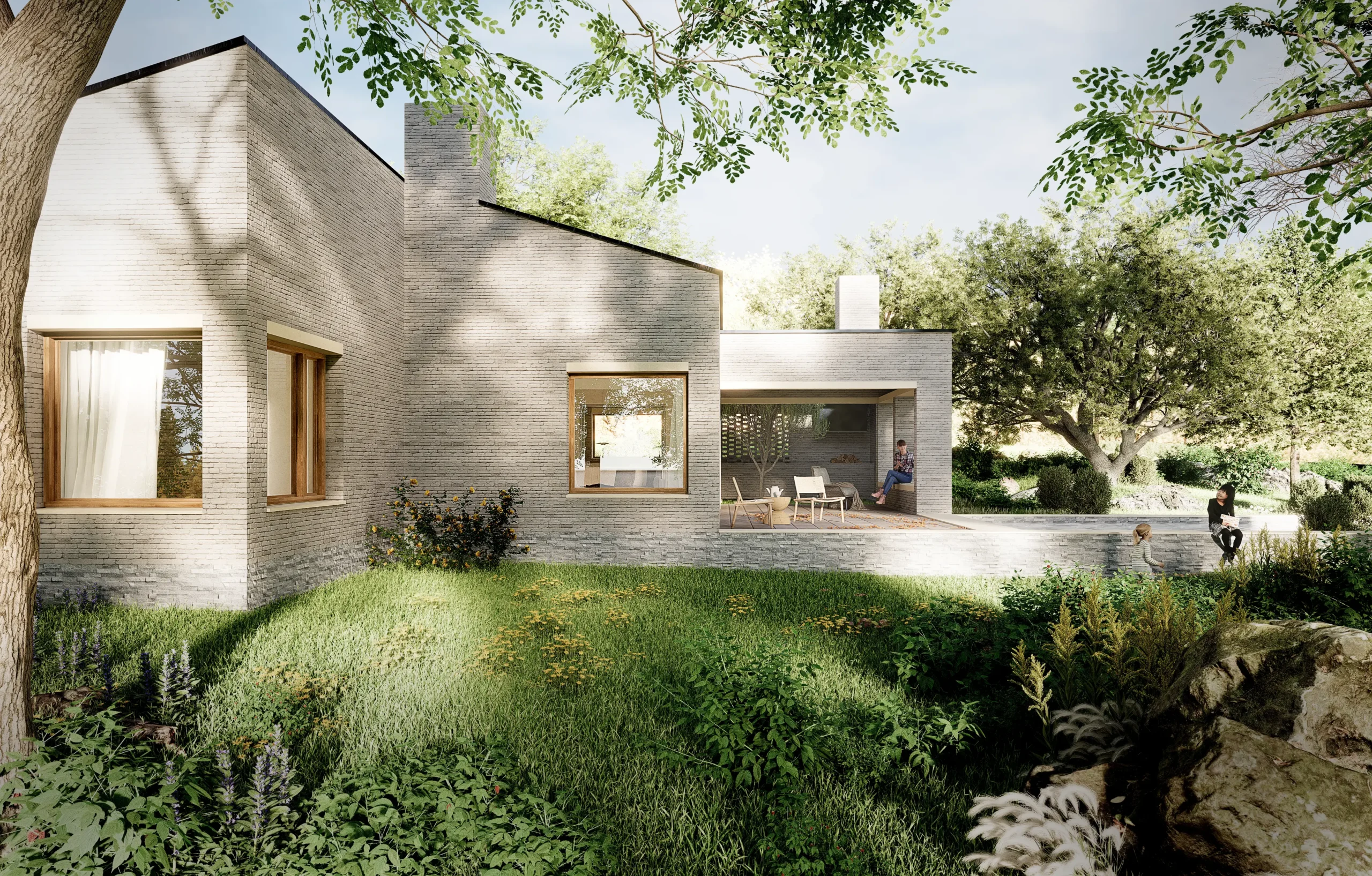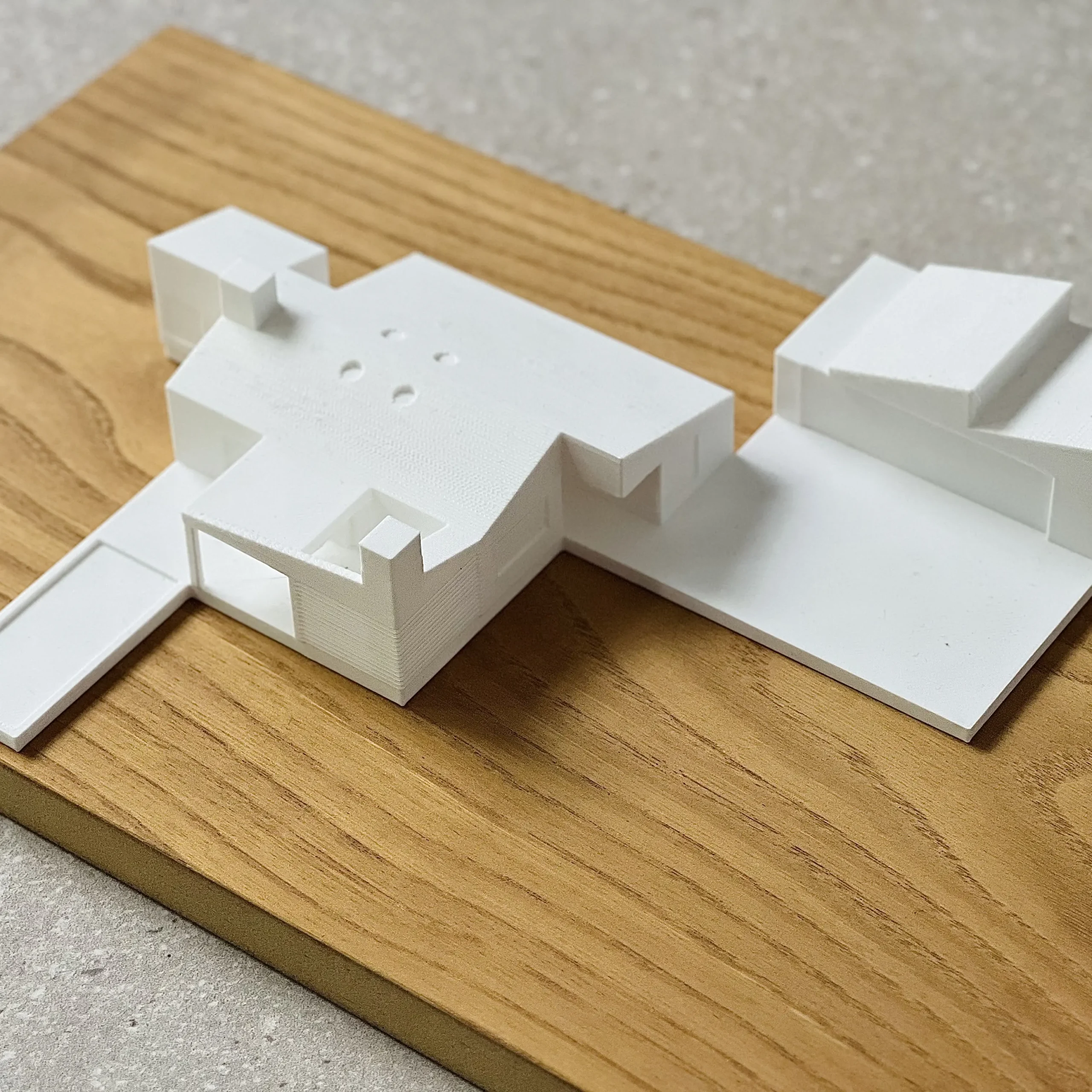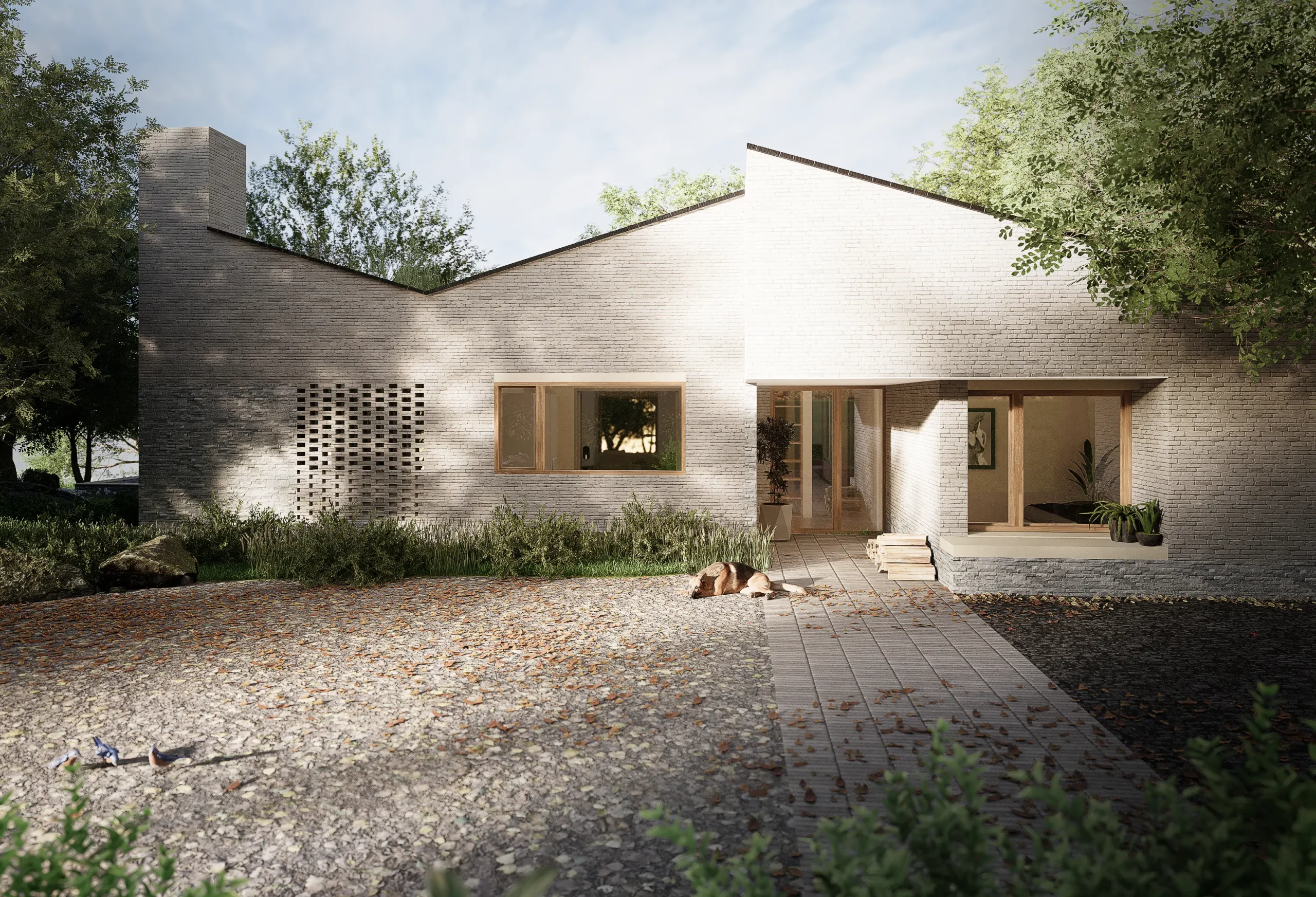Location
Seva, Barcelona
Category
Residence
Photography
FEM
Year
2025
Rising gently to the northeast of Barcelona, the Montseny massif is a landscape of contrasts – a meeting place between the Mediterranean and Continental climates, where dense forests of oak, beech, and holm oak cover the rocky slopes and give way to meadows and ridgelines. Declared a UNESCO Biosphere Reserve, it is a place where biodiversity and cultural memory coexist: ancient footpaths meander through valleys, shepherd huts dot the clearings, and the rhythm of the seasons remains palpable.
It is within this protected environment, in the area of El Montanyà, that the Forest Retreat takes root. The site is marked by rugged geology, a terrain of exposed grey stone that has withstood millennia of wind and water, now softened by a canopy of towering trees. Among them, the Scots pine reaches high into the light, while deer, wild boar and foxes move quietly across the undergrowth. Birds of prey circle above the ridges, reminding us of the wildness that endures despite human presence.
Here, the house does not seek to dominate but to accompany. It does not carve its place out of the forest, but rather finds a way to rest lightly on the stone, leaving as many trees as possible untouched. The result is not a dwelling that overlooks nature as scenery, but one that immerses itself within it, dissolving the boundary between domestic life and the living ecosystem that surrounds it.
Layers of stone, shaped over millennia, echo the timelessness sought in Forest Retreat – an architecture that aspires to endure with the same quiet permanence.
One of many visits with the clients, walking the site to decide how the house would live within it – guided by light, landscape, and views rather than by drawings alone.
The guiding principle of the Forest Retreat is one of essential integration. The architects’ ambition was to create a house that is neither an object imposed upon the mountain, nor a decorative gesture, but a structure that adapts to the terrain with humility and precision. Instead of placing a volume atop the ridge, the house steps back, shifts, and aligns itself with the contours of the rock. Each move is calculated to preserve the existing trees and to capture a different relationship with the surrounding forest.
Its form is deliberately elemental: a pitched roof with two slopes, recalling the archetypal image of the mountain cabin. Yet this simplicity is not reductive. Rather, it becomes a tool for variation. The roof lowers over the private rooms, creating intimacy and shelter, and rises in the centre to form a spacious living and dining area filled with light. The clarity of the geometry is broken only by sculptural chimneys that protrude from the ridge, introducing a distinctive rhythm to the silhouette.
This duality – of the archetypal and the specific, of the timeless and the personal – defines the house. On one hand, it is rooted in centuries of vernacular wisdom: the pitched roof protecting from heavy rain and snow, the compact form offering insulation during cold winters. On the other, it is unmistakably contemporary: its façades of continuous ceramic cladding, its calibrated openings, and its ability to shift and adapt internally to modern patterns of living.
The result is a house that feels familiar yet new. A retreat that belongs to the lineage of mountain dwellings, but one that speaks in the language of today.
The material palette reinforces the architectural philosophy of essentialism and integration. Externally, the façades are clad in a continuous ceramic surface, restrained and textural, lending the house a monolithic presence softened by the play of light and shadow. At its base, a plinth of local Montseny stone anchors the structure to its rocky foundation, its grey tones echoing the geology of the mountain itself.
A ceramic lattice, crafted in the same material as the façade, filters sunlight into the patio of the barbecue. This subtle device transforms functional necessity into a poetic play of light: patterns shifting across the surfaces as the day progresses, evoking the dappled shade of the forest canopy.
Inside, the atmosphere is one of quiet restraint. Wood brings warmth to floors and furnishings, while rustic plastered walls and ceilings create a tactile, imperfect surface that enhances the sense of shelter. The palette is minimal, yet never cold. Each material is chosen for its ability to age gracefully, to absorb traces of life, and to resonate with the natural surroundings.
Openings are placed with care: not as panoramic gestures, but as precise frames. A beech tree appears in the kitchen window, its leaves filtering morning light. From a bedroom, a sliver of view captures the distant ridgeline, a reminder of the mountain’s scale. In this way, nature is not a backdrop but a protagonist, encountered in fragments that heighten awareness and presence.
The house becomes less an object of architecture and more a part of the mountain’s own rhythms – breathing, sheltering, resting.
At the start of the assessment, we scoped out which requirements and features we wanted to implement by the assessment deadline. We used the assessment brief provided to us and and took into account the amount of time
Like branches growing from a trunk, the retreat emerges from its heart – the living room – expanding gently into the surrounding forest.
Stepping into the Forest Retreat is to embark on a sequence of shifting perspectives, each one framed to heighten awareness of the surrounding landscape. Entry occurs quietly from the north, where a secondary pitched-roof volume houses the garage. This modest gesture forms a threshold, articulating the approach and creating a sheltered courtyard before the main entrance. From here, the house opens southwards, where light, sun, and views dominate.
The interior is designed with an economy of circulation. Corridors are kept to a minimum, and sliding partitions orchestrate the flow of space. Rooms are not fixed enclosures but flexible territories: bedrooms can dissolve into the living room when needed, or be closed off for privacy. Large double sliding doors create fluid boundaries, allowing the life of the house to expand and contract depending on the occasion.
At the centre, the living and dining space rises to meet the ridge of the roof, creating a sense of openness and elevation. Here, a vast window frames the forest like a living painting, its composition shifting with the weather and seasons. In winter, the hearth anchors the room; in summer, the space extends outward to the shaded porch and swimming pool beyond.
The pool itself is conceived as an architectural limb – a linear gesture stretching into the forest. Its water mirrors the canopy of branches above, making the pool less an isolated object and more a reflective plane that blurs the boundaries between architecture and nature. Alongside it, a generous porch runs parallel to the house, offering a sheltered outdoor living room. This is where daily life moves fluidly between inside and outside: barbecues, gatherings, or quiet afternoons spent listening to the rustle of leaves.
Every spatial gesture is therefore tied to an experience – of intimacy or openness, of protection or exposure. The house does not dictate a single way of living but allows its inhabitants to choreograph their relationship with the forest day by day.
The Forest Retreat is more than a house; it is a statement about how we choose to live in relation to nature. In an age where construction often erases or competes with the environment, this project proposes a different path: one of coexistence, humility, and restraint.
Here, architecture becomes a frame for experiencing the forest. Its role is not to dominate but to intensify: to capture the rustling of leaves through a window, to extend daily life onto a shaded porch, to reflect the canopy in the surface of water. Each decision, from the pitched roof to the sliding partitions, is an invitation to dwell more closely with the rhythms of place.
To live here is to recognise the richness of simplicity. The house is not filled with excess or ornament, but with the essential qualities that matter: light, protection, adaptability, and connection. It is a reminder that true comfort arises not from abundance but from attunement – from finding balance with the environment and with ourselves.
The Forest Retreat stands as a refuge. A place to return to the essentials. A place where architecture withdraws, so that nature may take the lead.
Like branches growing from a trunk, the retreat emerges from its heart – the living room – expanding gently into the surrounding forest.
